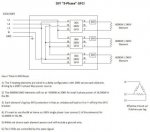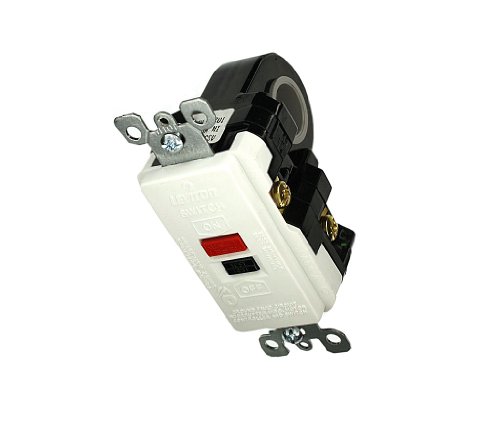mrjofus1959
Member
- Location
- Fort Collins, CO, USA
Hi All,
Brand new to this forum and hoping I can get some feedback on an idea I'm working on for a GFCI implementation for a 3-phase heating setup to use on a pilot brewing system in a commercial environment. I'm an EE that spends the majority of my time working with low voltage DC applications, so not a lot of time working with AC, particularly 3-phase. I know (or believe I do) that GFCI isn't required for a 3-phase setup, but I'd still like to implement if possible for a reasonable cost. That said I mean something significantly less expensive than a Bender LifeGuard 3-phase GFCI.
My first question is regarding the use of 2-pole GFCI breakers in a 120V/208Y 3-phase load center. Am I correct in believing that a 2-pole 240V style GFCI breaker will function as expected in such a panel, providing 208V single phase between either L1/L2, L2/L3 or L3/L1? If not then I know my idea won't work, but from what I can gather online it appears it should work.
So if the answer to my first question is "yes" then please refer to the image I've included below for what I'm trying/proposing to do. I would like to use 3 individual single-phase heating elements rated at 6000W at 240V, so about 4500W at 208V. These elements would be used to fire a brew kettle for making 1 barrel test and specialty batches in our otherwise 10 barrel sized brewery. If desired the system could be used in a single phase residential setting with 2 of the 3 elements providing 12kw power plugged into two separate circuit 240V 30A GFCI protected outlets. But for the primary application all 3 elements would be plugged into an enclosure which has been wired to create a 3-phase delta configured load on a 3-phase wye power source. The 3 elements would be powered on and off with 3 separate SSRs that are switched by the same controller.
That said my assumption is that if the answer to my first question is "yes" regarding using a 2-pole GFCI on 208V single phase from the load center, then the schematic I've shown should also work since I'm basically powering 3 separate loads through the 3 GFCI breakers.
Any feedback is greatly appreciated! If I'm totally out to lunch with this idea that's fine, but if nothing else it's been fun to think about.
Thanks, Kevin
Brand new to this forum and hoping I can get some feedback on an idea I'm working on for a GFCI implementation for a 3-phase heating setup to use on a pilot brewing system in a commercial environment. I'm an EE that spends the majority of my time working with low voltage DC applications, so not a lot of time working with AC, particularly 3-phase. I know (or believe I do) that GFCI isn't required for a 3-phase setup, but I'd still like to implement if possible for a reasonable cost. That said I mean something significantly less expensive than a Bender LifeGuard 3-phase GFCI.
My first question is regarding the use of 2-pole GFCI breakers in a 120V/208Y 3-phase load center. Am I correct in believing that a 2-pole 240V style GFCI breaker will function as expected in such a panel, providing 208V single phase between either L1/L2, L2/L3 or L3/L1? If not then I know my idea won't work, but from what I can gather online it appears it should work.
So if the answer to my first question is "yes" then please refer to the image I've included below for what I'm trying/proposing to do. I would like to use 3 individual single-phase heating elements rated at 6000W at 240V, so about 4500W at 208V. These elements would be used to fire a brew kettle for making 1 barrel test and specialty batches in our otherwise 10 barrel sized brewery. If desired the system could be used in a single phase residential setting with 2 of the 3 elements providing 12kw power plugged into two separate circuit 240V 30A GFCI protected outlets. But for the primary application all 3 elements would be plugged into an enclosure which has been wired to create a 3-phase delta configured load on a 3-phase wye power source. The 3 elements would be powered on and off with 3 separate SSRs that are switched by the same controller.
That said my assumption is that if the answer to my first question is "yes" regarding using a 2-pole GFCI on 208V single phase from the load center, then the schematic I've shown should also work since I'm basically powering 3 separate loads through the 3 GFCI breakers.
Any feedback is greatly appreciated! If I'm totally out to lunch with this idea that's fine, but if nothing else it's been fun to think about.
Thanks, Kevin



